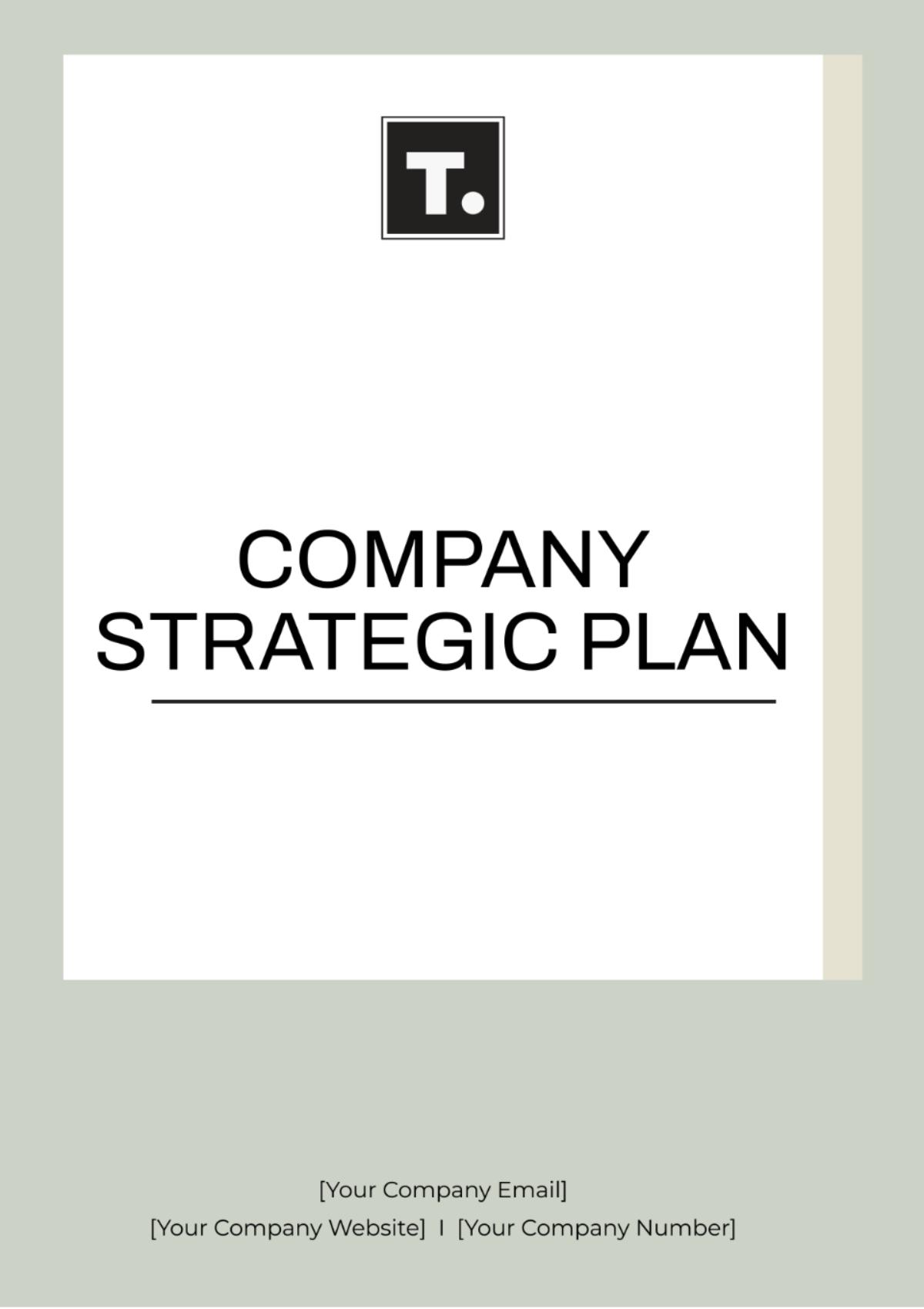Free Company Strategic Plan

Company: | Department: | Prepared by: |
|---|---|---|
[YOUR COMPANY NAME] | [YOUR DEPARTMENT] | [YOUR NAME] |
I. Executive Summary
The Executive Summary provides a concise overview of the company's strategic direction, highlighting key objectives and initiatives. In the next three years, [YOUR COMPANY NAME] aims to expand its market presence, increase revenue by 20%, and enhance customer satisfaction through improved product offerings and customer service.
II. Company Overview
A. Mission Statement
Our mission is to deliver high-quality products that improve the lives of our customers and contribute to a sustainable future.
B. Vision Statement
Our vision is to be a market leader in innovation, customer service, and corporate responsibility.
C. Values
Integrity: We act with honesty and integrity in all our dealings.
Excellence: We strive for excellence in everything we do.
Innovation: We foster a culture of innovation and continuous improvement.
D. Core Competencies
Our core competencies include product design, manufacturing expertise, and customer service excellence.
III. Environmental Analysis
A. SWOT Analysis
Strengths | Weaknesses | Opportunities | Threats |
|---|---|---|---|
Strong brand reputation | Limited market share | Growing market demand | Intense competition |
Loyal customer base | Reliance on few key suppliers | Expansion into new markets | Economic downturns |
B. PESTLE Analysis
Factor | Impact | Implications |
|---|---|---|
Political | Stable political environment | Supports business growth |
Economic | Economic growth | Opportunities for expansion |
Social | Changing consumer preferences | Impact on product demand |
Technological | Rapid technological advancements | Need for ongoing innovation |
Legal | Compliance with regulations | Crucial for business operations |
Environmental | Increasing focus on sustainability | Influences product development |
IV. Strategic Goals and Objectives
A. Financial Goals
Increase revenue by 20% through market expansion and new product launches.
Improve profit margins by 15% through cost optimization and efficiency improvements.
B. Market Goals
Expand market share by 10% in existing markets.
Enter two new international markets by the end of the year.
C. Operational Goals
Enhance operational efficiency by streamlining production processes.
Improve customer service response times by implementing a new CRM system.
D. Innovation Goals
Launch three new innovative products in the next two years.
Invest in research and development to stay ahead of technological advancements.
V. Strategies and Initiatives
A. Growth Strategies
Expand distribution channels to reach new customer segments.
Explore strategic partnerships and collaborations to enhance market presence.
B. Marketing Strategies
Launch targeted marketing campaigns to increase brand awareness.
Leverage digital marketing channels to engage with customers and drive sales.
C. Operational Strategies
Implement lean manufacturing principles to reduce waste and improve efficiency.
Invest in employee training and development to enhance skills and productivity.
D. Innovation Strategies
Establish a dedicated innovation team to drive product development.
Collaborate with research institutions to explore new technologies and materials.
VI. Implementation Plan
A. Action Plan
Develop a detailed timeline for each strategic initiative.
Assign responsibilities to individuals or teams and set clear targets and milestones.
B. Resource Allocation
Allocate financial, human, and technological resources based on the priority and impact of each initiative.
Monitor resource usage and adjust allocations as needed.
C. Key Performance Indicators (KPIs)
Define specific KPIs for each strategic objective to measure progress and success.
Regularly review KPIs and adjust strategies as needed to ensure goals are met.
VII. Monitoring and Evaluation
A. Performance Monitoring
Establish regular performance review meetings to track progress against KPIs.
Use performance dashboards to monitor key metrics in real-time.
B. Evaluation Criteria
Define criteria for evaluating the effectiveness and impact of strategic initiatives.
Conduct periodic reviews to assess progress and make adjustments as needed.
C. Review and Adaptation
Review the strategic plan annually to ensure it remains relevant and aligned with business objectives.
Adapt strategies based on changing market conditions, customer feedback, and internal capabilities.
VIII. Risk Management
A. Risk Identification
Identify potential risks related to market conditions, competition, regulatory changes, etc.
Conduct risk assessments to prioritize risks based on likelihood and impact.
B. Risk Mitigation Strategies
Develop risk mitigation strategies to minimize the impact of identified risks.
Implement contingency plans to address unforeseen events and disruptions.
C. Contingency Planning
Identify alternative courses of action in case of deviations from the original plan.
Ensure key stakeholders are aware of contingency plans and their roles in executing them.
IX. Communication Plan
A. Stakeholder Engagement
Identify key stakeholders, including employees, customers, investors, and suppliers.
Tailor communication messages to address the needs and concerns of each stakeholder group.
B. Communication Channels
Use a mix of communication channels, including meetings, newsletters, and social media, to reach stakeholders.
Ensure communication is timely, clear, and consistent across all channels.
C. Transparency and Accountability
Foster a culture of transparency by sharing relevant information with stakeholders.
Hold regular meetings and forums to update stakeholders on progress and address any issues or concerns.
X. Conclusion
By implementing the strategies outlined in this plan, [YOUR COMPANY NAME] aims to strengthen its position in the market, drive growth, and create value for its stakeholders.
- 100% Customizable, free editor
- Access 1 Million+ Templates, photo’s & graphics
- Download or share as a template
- Click and replace photos, graphics, text, backgrounds
- Resize, crop, AI write & more
- Access advanced editor
Plan for success with the Company Strategic Plan Template, exclusively offered by Template.net. This comprehensive template, editable in our AI Editor Tool, helps you define your company's mission, vision, and strategic objectives. Customizable to your company's goals, it provides a clear roadmap for achieving long-term success. Make it yours today!





























